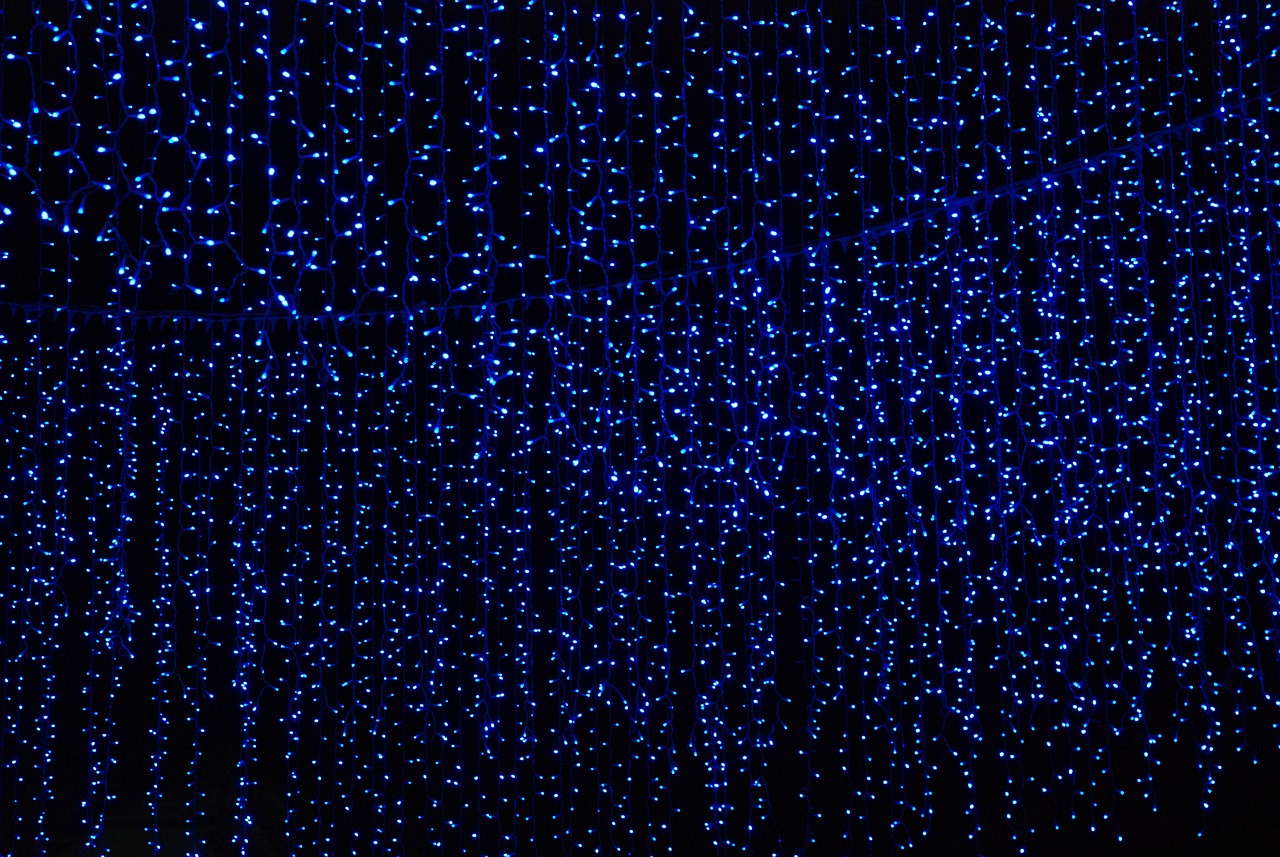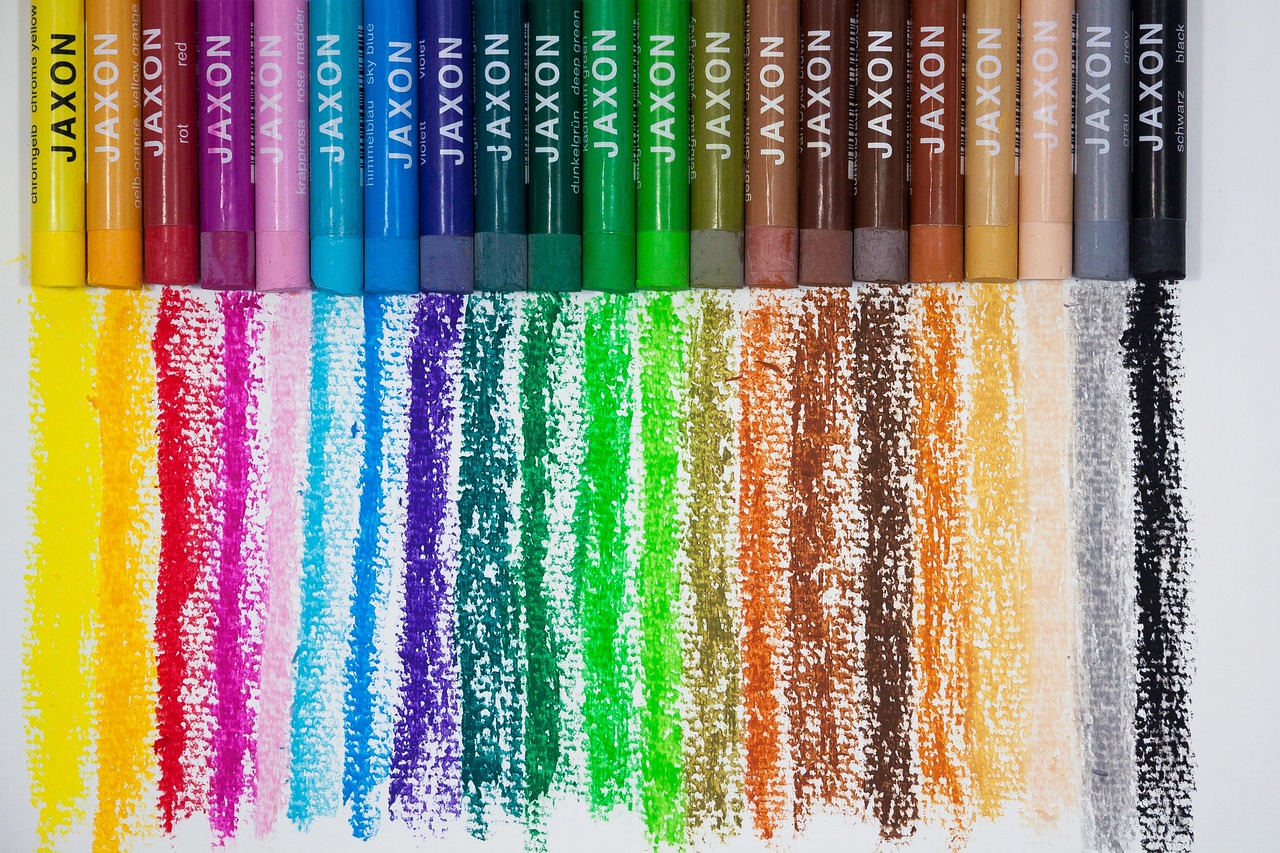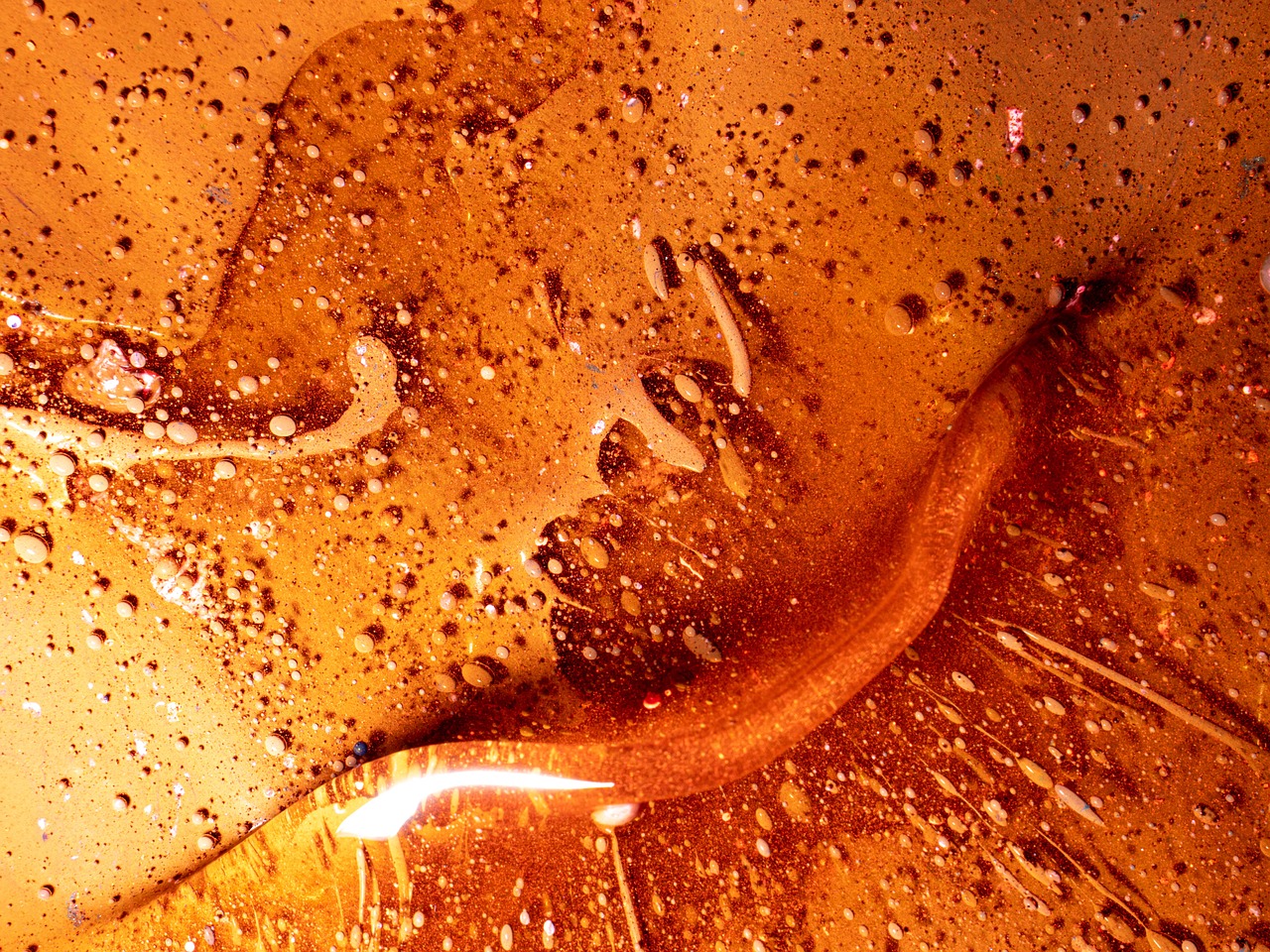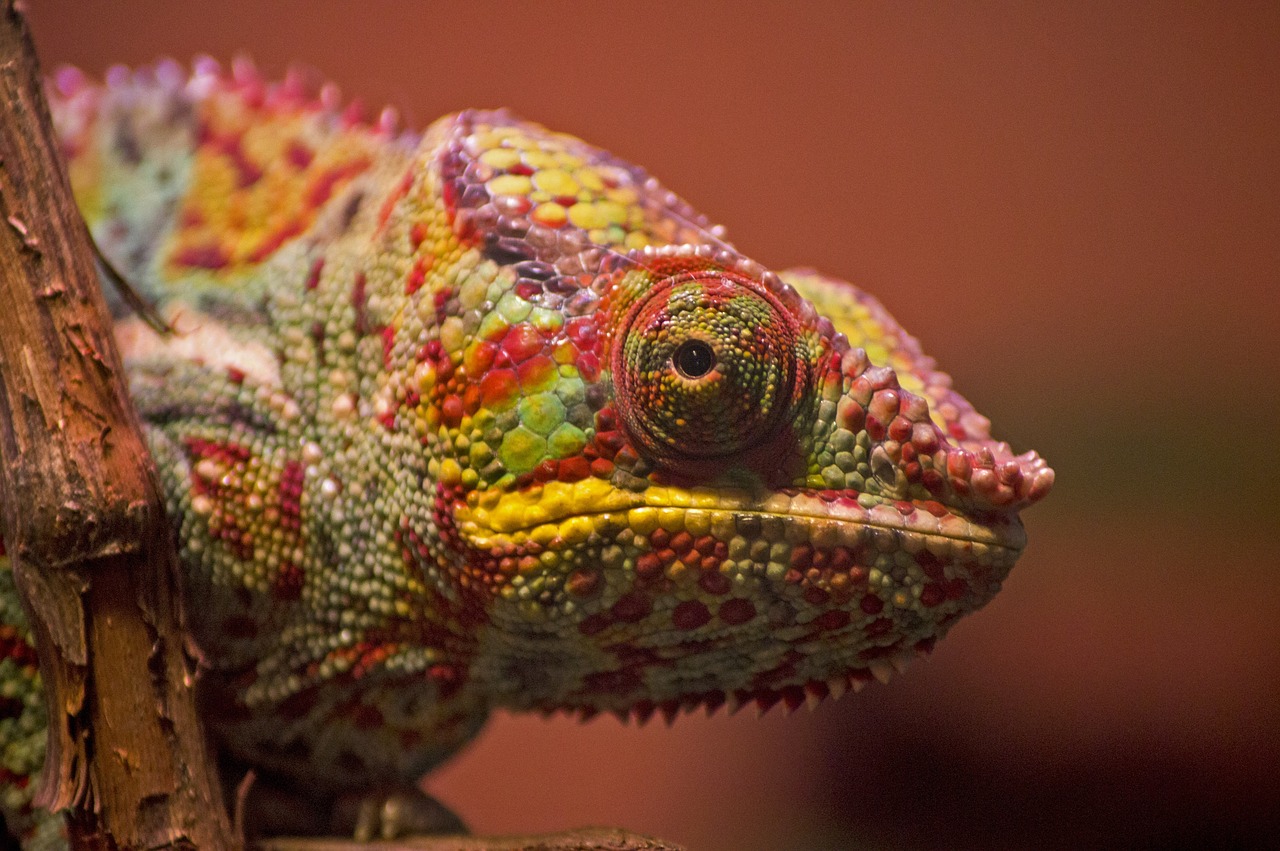Understanding the Basics of Color in Painting
Color is more than just a visual element in painting; it is a powerful tool that can evoke emotions, create atmospheres, and tell stories. When an artist picks up a brush, they are not merely applying pigments to a canvas; they are engaging in a dialogue with the viewer through the language of color. This article explores the fundamental principles of color theory, its significance in painting, and practical applications for artists to enhance their work and express emotions effectively through color.
The journey into the world of color begins with understanding the color wheel. This essential tool illustrates the relationships between colors, serving as a roadmap for artists. By grasping the structure of the color wheel, artists can mix colors more effectively and create harmonious palettes that resonate with their intended message. Imagine the color wheel as a vibrant circle of possibilities, where each hue has its own personality and role to play in the grand composition of art.
At the heart of the color wheel are the primary colors: red, blue, and yellow. These are the building blocks of all other colors. When combined, they create secondary colors—green, orange, and purple. But the adventure doesn’t stop there! Mixing primary and secondary colors gives birth to tertiary colors, expanding the artist's palette and offering even more options for expression. Understanding these categories is crucial for any painter looking to master the art of color mixing.
The color wheel not only helps in mixing colors but also provides insight into the relationships and interactions between different hues. For instance, colors can be categorized into warm and cool tones. Warm colors, like reds and yellows, tend to evoke feelings of excitement and energy, while cool colors, such as blues and greens, promote calmness and tranquility. Recognizing these effects can significantly influence the mood of a painting.
When an artist chooses to work with warm colors, they are often attempting to stimulate feelings of passion and excitement. Think of a sunset—those vibrant reds and oranges can ignite the sky and set the mood for a romantic evening. On the flip side, cool colors can create soothing atmospheres that invite the viewer to relax. Imagine a serene lake surrounded by lush green trees; the blues and greens create a peaceful escape from the chaos of daily life.
Warm colors are not just visually striking; they also carry an emotional punch. Artists often use these hues to draw attention to focal points in their work or to convey strong emotions. For example, a painter might use a bold red to symbolize love or danger, effectively guiding the viewer's emotional response. The strategic use of warm colors can transform a simple landscape into a dramatic scene filled with tension and energy.
In contrast, cool colors can create a sense of peace and tranquility. Think about a painting of a tranquil forest; the use of greens and blues can evoke feelings of calm and serenity. Artists often employ these colors in landscapes or serene compositions to help the viewer escape into a world of relaxation. The emotional impact of color is profound, and understanding how to manipulate it can elevate an artist's work to new heights.
Color harmony is another critical aspect of painting that refers to the pleasing arrangement of colors in a composition. When colors work well together, they create a sense of balance and cohesion. There are various types of color harmony, including complementary, analogous, and triadic schemes. Understanding these relationships allows artists to create visually appealing artworks that resonate with viewers.
Contrast is essential for enhancing visual interest and drawing attention to focal points in a painting. By using contrasting colors, artists can create depth and dimension, making their work more dynamic. For example, placing a bright yellow against a deep purple can create a striking visual effect that captures the viewer's eye.
Complementary colors are those that sit opposite each other on the color wheel. When used together, they create a vibrant contrast that can make elements stand out and add life to a painting. For instance, pairing blue with orange can produce a stunning visual impact, drawing the viewer's gaze and creating a sense of energy within the artwork.
On the other hand, analogous colors are those that sit next to each other on the color wheel. This combination creates a more subtle, harmonious effect that can produce a cohesive look while maintaining visual interest. For example, using shades of blue and green together can evoke feelings of tranquility and unity, making the artwork feel complete and well-balanced.
- What is the importance of color theory in painting? Color theory helps artists understand how colors interact, allowing them to create more effective and emotionally resonant artworks.
- How can I improve my color mixing skills? Practice mixing primary colors to create secondary and tertiary colors, and experiment with different combinations to see how they affect your artwork.
- What are warm and cool colors? Warm colors are those that evoke warmth and energy, like reds and yellows, while cool colors create a sense of calm, such as blues and greens.

The Color Wheel
The color wheel is an essential tool for artists, serving as a visual representation of colors and their relationships. Imagine it as a circular map of colors, where each hue is strategically placed to show how they interact with one another. This simple yet powerful tool not only helps in mixing colors but also guides artists in creating harmonious palettes. By understanding the layout of the color wheel, artists can easily identify which colors complement each other and which ones clash.
At its core, the color wheel is divided into three primary categories: primary colors, secondary colors, and tertiary colors. Primary colors—red, blue, and yellow—are the building blocks of all other colors. When you mix these colors together, you create secondary colors: green, orange, and purple. But wait, there's more! By blending primary and secondary colors, you get tertiary colors, which expand your palette even further. This layering of colors is akin to adding spices to a dish; the right combination can elevate your artwork to new heights.
Understanding the color wheel is not just about mixing paints; it’s about grasping the emotional resonance that colors can evoke. For instance, if you’re feeling adventurous, you might gravitate towards vibrant, warm colors like reds and yellows. On the other hand, if you’re in a more peaceful mood, cool colors like blues and greens might be your go-to. This emotional connection to color can significantly impact the mood of your artwork and the way it is perceived by viewers.
To visualize this concept, consider the following table that summarizes the relationships between primary, secondary, and tertiary colors:
| Color Type | Examples |
|---|---|
| Primary Colors | Red, Blue, Yellow |
| Secondary Colors | Green (Blue + Yellow), Orange (Red + Yellow), Purple (Red + Blue) |
| Tertiary Colors | Red-Orange, Yellow-Orange, Yellow-Green, Blue-Green, Blue-Purple, Red-Purple |
In conclusion, the color wheel is more than just a tool for mixing paints; it's a gateway to understanding how colors interact and how they can be used to convey emotions and messages in art. Whether you’re a seasoned artist or a beginner, mastering the color wheel can dramatically enhance your painting skills and help you express your creativity in ways you never thought possible.
- What is the purpose of the color wheel? The color wheel helps artists understand color relationships and mix colors effectively.
- How many primary colors are there? There are three primary colors: red, blue, and yellow.
- What are complementary colors? Complementary colors are colors that are opposite each other on the color wheel and create a striking contrast.
- Can I create any color using the color wheel? Yes, by mixing primary, secondary, and tertiary colors, you can create a vast range of colors.

Primary, Secondary, and Tertiary Colors
When it comes to the world of painting, understanding is essential for any artist looking to elevate their work. Think of primary colors as the building blocks of all other colors. These are the pure hues that cannot be created by mixing other colors together. In the traditional color wheel, the primary colors are red, blue, and yellow. They sit at equal distances from each other, forming the foundation upon which all other colors are built.
Now, when you combine two primary colors, you create what's known as a secondary color. For instance, mixing red and blue gives you purple, blue and yellow create green, and red and yellow produce orange. These secondary colors are essential for artists as they provide a broader spectrum of hues to work with, allowing for more creativity and expression in their artwork.
But wait, there's more! Enter the tertiary colors, which are made by mixing a primary color with a secondary color. This combination expands the artist's palette even further, introducing colors like red-orange, yellow-green, and blue-purple. These hues add depth and complexity to a painting, enabling artists to convey a wide range of moods and emotions.
| Type of Color | Examples |
|---|---|
| Primary Colors | Red, Blue, Yellow |
| Secondary Colors | Purple, Green, Orange |
| Tertiary Colors | Red-Orange, Yellow-Green, Blue-Purple |
Understanding these color categories is crucial for artists, as it not only helps in color mixing but also in creating visually appealing compositions. Imagine you're painting a sunset; knowing how to mix your primary and secondary colors can help you achieve that perfect gradient of oranges and purples that mimic the beauty of nature. This knowledge empowers artists to make informed choices about their color palettes, leading to more impactful artwork.
In addition to mixing colors, being aware of how these colors interact with each other can enhance the overall aesthetic of a piece. For example, using a mix of secondary and tertiary colors can create stunning contrasts or subtle harmonies, depending on the artist's intention. So, whether you're a seasoned painter or just starting out, grasping the concept of primary, secondary, and tertiary colors will undoubtedly enrich your artistic journey.
- What are primary colors? Primary colors are the basic colors that cannot be created by mixing other colors. They are red, blue, and yellow.
- How are secondary colors formed? Secondary colors are formed by mixing two primary colors together.
- Can you give examples of tertiary colors? Yes! Tertiary colors include red-orange, yellow-green, and blue-purple, created by mixing a primary color with a secondary color.
- Why is understanding color important in painting? Understanding color helps artists mix hues effectively and create visually appealing compositions that evoke emotions.

Warm and Cool Colors
When we talk about colors, they can be broadly categorized into two families: warm and cool. This division isn't just a matter of temperature; it's about the feelings and emotions these colors can evoke. Think of warm colors, like reds, oranges, and yellows, as the vibrant, energetic friends at a party. They radiate warmth and enthusiasm, often reminding us of the sun or a cozy fire. On the flip side, cool colors, such as blues, greens, and purples, are like the calm, soothing presence you find in a serene landscape. They can transport you to a tranquil lake or a peaceful forest, creating a sense of relaxation and tranquility.
Understanding the distinction between these two color families is crucial for artists. Why? Because the choice of color can dramatically influence the mood of a painting. For instance, imagine a painting filled with warm colors. It might feel lively and inviting, perfect for a bustling café scene or a vibrant sunset. On the other hand, a piece dominated by cool colors might evoke feelings of peace and calm, ideal for a serene landscape or a quiet moment of reflection.
Here's a quick breakdown of the emotional impacts of warm and cool colors:
| Color Family | Examples | Emotional Impact |
|---|---|---|
| Warm Colors | Reds, Oranges, Yellows | Excitement, Energy, Passion |
| Cool Colors | Blues, Greens, Purples | Calmness, Relaxation, Serenity |
Artists often use these color families strategically to guide the viewer's emotions. For example, a painter might use warm colors to draw attention to a central figure in a composition, creating a focal point that feels alive and dynamic. Conversely, they might employ cool colors in the background to provide depth and contrast, allowing the warm elements to pop even more. This interplay of warm and cool colors can create a dynamic visual experience, much like a well-composed piece of music where different notes harmonize to evoke a powerful emotional response.
In conclusion, recognizing the effects of warm and cool colors can significantly enhance an artist's ability to communicate emotions through their work. By thoughtfully selecting their color palette, artists can not only create visually stunning pieces but also engage their audience on a deeper emotional level.
- What are warm colors? Warm colors include reds, oranges, and yellows, and they evoke feelings of energy and warmth.
- What are cool colors? Cool colors consist of blues, greens, and purples, promoting feelings of calmness and tranquility.
- How do warm and cool colors affect a painting's mood? Warm colors can create excitement and passion, while cool colors can evoke peace and serenity, significantly influencing the viewer's emotional response.
- Can an artist use both warm and cool colors in one painting? Absolutely! Combining both can create contrast and depth, enhancing the overall visual impact of the artwork.

Emotional Impact of Warm Colors
Warm colors, such as reds, oranges, and yellows, are often associated with feelings of warmth, energy, and excitement. These colors can evoke a range of emotions, making them powerful tools for artists looking to convey specific feelings in their work. For instance, a vibrant red can stimulate passion and intensity, while a sunny yellow can bring about feelings of happiness and optimism. When used effectively, warm colors can transform a painting into an emotional experience, drawing viewers in and inviting them to connect with the artwork on a deeper level.
Consider how a sunset paints the sky in hues of orange and red; it’s not just a visual spectacle but an emotional one as well. Artists harness this emotional resonance to create atmospheres that resonate with the viewer. For example, a painting featuring warm colors might depict a lively market scene, bustling with energy and life. The use of warm colors can make the viewer feel as if they are a part of that vibrant world, experiencing the excitement firsthand.
Moreover, warm colors can also be used strategically to highlight focal points within a piece. When placed against cooler backgrounds, warm colors tend to pop, drawing the viewer's eye to specific areas of the painting. This technique is akin to using a spotlight on a stage, where the warm colors command attention and create a sense of urgency or importance.
However, it’s essential for artists to consider the balance of colors in their compositions. While warm colors can energize a piece, an overabundance can lead to feelings of agitation or chaos. Just like a perfectly brewed cup of coffee, a little warmth can invigorate, but too much can leave you jittery. Therefore, finding the right mix is crucial for achieving the desired emotional impact.
In summary, warm colors possess a unique ability to stir emotions and create dynamic interactions within a painting. By understanding their emotional impact, artists can harness these colors to enhance their work, inviting viewers into a world filled with feeling and expression.
- What are warm colors? Warm colors include reds, oranges, and yellows, which evoke feelings of warmth and energy.
- How do warm colors affect mood? Warm colors can stimulate excitement, passion, and happiness, influencing the overall mood of a painting.
- Can warm colors be overwhelming? Yes, while warm colors can energize a piece, too much can lead to feelings of agitation or chaos.
- How can artists balance warm colors in their work? Artists can balance warm colors with cool colors or neutral tones to create harmony and avoid overwhelming the viewer.

Emotional Impact of Cool Colors
When we think about cool colors, our minds often drift to the calming hues of blues, greens, and purples. These colors have a unique ability to evoke feelings of tranquility and peace, much like a gentle breeze on a warm day or the serene stillness of a quiet lake. Artists frequently harness the power of cool colors to create atmospheres that soothe the soul and promote relaxation. Imagine stepping into a room painted in soft blues and greens; the moment you enter, you may feel an immediate sense of calm wash over you. This is the emotional impact that cool colors can have.
In the world of painting, the strategic use of cool colors can transform an artwork from simply visually appealing to deeply evocative. For instance, consider a landscape painting featuring a tranquil sea under a twilight sky. The use of cool blues and soft purples can transport the viewer to that serene moment, allowing them to almost feel the cool water lapping at their feet. This emotional connection is what makes cool colors so powerful in an artist's palette.
Furthermore, cool colors can also serve as a backdrop for other elements in a painting, enhancing their vibrancy and drawing the viewer's eye. When placed alongside warm colors, cool tones can create a striking contrast that not only highlights the warmth but also emphasizes the coolness, much like a refreshing drink on a hot day. This interplay between warm and cool colors is crucial for achieving balance and harmony in artwork.
To illustrate the effects of cool colors, consider the following table that outlines some common cool colors and their associated emotional impacts:
| Cool Color | Emotional Impact |
|---|---|
| Blue | Calmness, Trust, Stability |
| Green | Harmony, Growth, Refreshment |
| Purple | Mystery, Spirituality, Luxury |
In summary, cool colors are not just a visual treat; they have the power to shape emotions and create immersive experiences. Whether used alone or in conjunction with warm colors, the emotional impact of cool colors is undeniable. They invite viewers to pause, reflect, and find solace in the beauty of the artwork. So, the next time you pick up a brush, consider how you can use cool colors to evoke feelings of peace and tranquility in your own creations.
- What are cool colors? Cool colors are hues that are typically associated with calmness and serenity, such as blue, green, and purple.
- How do cool colors affect emotions? Cool colors can evoke feelings of tranquility, relaxation, and peace, making them ideal for creating soothing atmospheres in art.
- Can cool colors be used with warm colors? Yes! The combination of cool and warm colors can create striking contrasts and enhance the overall impact of a painting.

Color Harmony
Color harmony is like the secret sauce in painting that transforms a simple canvas into a mesmerizing masterpiece. It’s all about how colors work together to create a visually appealing and balanced composition. Think of it as a relationship between colors, where they either get along beautifully or clash dramatically. Understanding color harmony can elevate your artwork from mundane to extraordinary, allowing you to convey emotions and messages with clarity and impact.
There are several types of color harmony that artists can utilize, each offering a unique aesthetic and emotional effect. One of the most popular methods is the use of complementary colors, which are located directly opposite each other on the color wheel. When placed side by side, these colors create a vibrant contrast that can make your artwork pop. Imagine a bright orange next to a rich blue; the interplay of these colors can draw the viewer's eye and create a dynamic visual experience.
On the other hand, analogous colors, which are next to each other on the color wheel, provide a more subtle and harmonious effect. For instance, using shades of blue, blue-green, and green together can create a serene and cohesive look, perfect for evoking feelings of tranquility in a landscape painting. This approach is particularly effective for artists looking to maintain a sense of unity while still keeping the viewer's interest piqued.
Additionally, triadic color harmony involves using three colors that are evenly spaced around the color wheel. This method can create a vibrant and lively composition, often seen in modern art. An example of this would be combining red, yellow, and blue to create a playful and energetic feel. When artists master these different types of color harmonies, they can manipulate the mood and atmosphere of their work, guiding the viewer's emotional response.
Ultimately, the key to achieving color harmony lies in understanding the relationships between colors and how they interact with one another. By experimenting with different combinations, artists can discover what works best for their unique style and message. It’s like cooking; sometimes you need to try a pinch of this and a dash of that to find the perfect flavor. So grab your brushes, explore the color wheel, and let the magic of color harmony transform your paintings into captivating expressions of creativity!
- What is color harmony? Color harmony refers to the pleasing arrangement of colors in a composition, which can create balance and visual interest.
- Why is color harmony important in painting? It helps to convey emotions and messages effectively, enhancing the overall impact of the artwork.
- What are complementary colors? Complementary colors are pairs of colors that are opposite each other on the color wheel, creating striking contrasts when used together.
- How can I achieve color harmony in my artwork? Experiment with different color combinations, such as complementary, analogous, or triadic colors, to find the arrangement that resonates with your artistic vision.

Contrast in Color
Contrast is like the spice of life in painting; it adds flavor and excitement! Imagine biting into a dish that’s bland and unseasoned—now, think about how a dash of salt or a sprinkle of herbs transforms it into something delightful. Similarly, contrast in color enhances visual interest and draws the viewer's eye to focal points in a painting. It’s not just about making things stand out; it’s about creating depth and dimension, giving your artwork a sense of life and movement.
When artists use contrasting colors, they create a dynamic relationship that can evoke emotions and reactions. Consider the classic example of a bright red apple placed against a deep green background. The apple practically jumps off the canvas! This technique can be particularly effective in guiding the viewer's gaze, allowing them to focus on the most important elements of the artwork. Without contrast, a painting may feel flat or lifeless, lacking the energy that captures attention.
There are several ways artists can explore contrast in their work:
- Color Contrast: This involves using colors that are opposite each other on the color wheel, such as blue and orange or red and green. These combinations create striking visual effects that can energize a composition.
- Value Contrast: This refers to the difference in lightness or darkness between colors. A light color against a dark background can create a dramatic effect, making the subject pop.
- Saturation Contrast: This technique uses colors of varying intensity. A bright, saturated color alongside a muted tone can create an eye-catching juxtaposition.
Artists often experiment with these contrasts to find the right balance for their compositions. In fact, the careful application of contrast can lead to a more cohesive and engaging piece. For instance, a landscape painting might use warm, vibrant colors for the foreground to draw attention, while employing cooler, muted tones in the background to create a sense of depth and distance.
Furthermore, contrast can serve as a powerful storytelling tool. It can highlight themes, emotions, or even conflicts within the artwork. Think of a painting that depicts a stormy sea; the dark, turbulent waves contrasted with bright flashes of lightning can evoke feelings of chaos and tension. Alternatively, a serene sunset with soft pastel colors can convey peace and tranquility. The choice of contrast not only shapes the visual narrative but also guides the emotional response of the viewer.
In summary, mastering the use of contrast in color is essential for any artist looking to create compelling and dynamic artwork. It’s about understanding the relationships between colors and how they interact to produce a desired effect. So, the next time you pick up your brush, remember that contrast is your ally in crafting a masterpiece that captivates and resonates with your audience.
- What is the importance of contrast in painting? Contrast is crucial because it enhances visual interest, draws attention to focal points, and adds depth to the artwork.
- How can I create contrast in my paintings? You can create contrast by using complementary colors, varying lightness and darkness (value), and mixing saturated and muted tones.
- Can contrast affect the mood of a painting? Absolutely! Different types of contrast can evoke various emotions, from excitement to tranquility, depending on how they are applied.

Complementary Colors
Complementary colors are like that perfect dance partner who brings out the best in you. They are positioned directly opposite each other on the color wheel, creating a striking visual contrast that can make your artwork pop! Imagine pairing a vibrant red with a cool green or a sunny yellow with a rich purple; these combinations can create an electric energy that draws the viewer's eye and holds their attention. Artists often utilize these colors not just for their aesthetic appeal but also for their ability to evoke strong emotional responses.
When you use complementary colors, you’re not just splashing paint on a canvas; you’re crafting a dialogue between hues. This interplay can help emphasize certain elements in your painting, making them stand out dramatically. For instance, if you have a bright orange flower in a garden scene, placing it against a blue background can make that flower leap off the canvas, almost as if it’s reaching out to the viewer. This technique is essential for creating focal points in your artwork.
Here’s a quick breakdown of some classic complementary color pairs to get your creative juices flowing:
| Color | Complement |
|---|---|
| Red | Green |
| Blue | Orange |
| Yellow | Purple |
However, using complementary colors isn’t just about slapping two opposing hues together. It’s about balance and intention. Too much contrast can overwhelm the viewer, while too little can make your artwork feel flat and uninspired. The key is to find that sweet spot where the colors enhance each other without clashing. Think of it as seasoning a dish; too much salt can ruin a meal, while just the right amount can elevate it to gourmet status.
In addition to visual impact, complementary colors can also be used to convey emotion. For instance, a fiery red paired with a deep green can create a sense of urgency and excitement, while a soft yellow and purple might evoke feelings of calm and serenity. This emotional layering adds depth to your work, allowing each viewer to connect with your painting on a personal level.
So, next time you’re standing in front of your easel, consider the power of complementary colors. They are more than just a tool; they are a language that speaks to the heart of your audience. By mastering their use, you can transform your paintings from simple images into powerful expressions of emotion and beauty.
- What are complementary colors? Complementary colors are pairs of colors that are opposite each other on the color wheel, creating contrast and visual interest when used together.
- How can I use complementary colors in my artwork? You can use complementary colors to create focal points, enhance emotional impact, and achieve balance in your compositions.
- Can complementary colors be used in different mediums? Absolutely! Whether you’re painting, designing, or working with textiles, complementary colors can enhance any visual project.
- Are there any rules for using complementary colors? While there are no strict rules, it’s important to find a balance to avoid overwhelming the viewer. Experimentation is key!

Analogous Colors
When you think about color in art, have you ever noticed how certain colors seem to naturally belong together? This is where come into play. These are colors that sit next to each other on the color wheel, creating a seamless blend that can evoke a specific mood or feeling. For instance, if you take a look at a color wheel, you might find that blue, blue-green, and green are all neighbors. Together, they create a harmonious palette that feels cohesive and balanced.
Using analogous colors in your artwork can be a game-changer. Imagine painting a serene landscape where the colors of the sky transition smoothly into the colors of the water below. The gentle shift from one hue to another can guide the viewer's eye through the piece, creating a sense of flow and unity. This technique not only enhances the visual appeal but also helps convey emotions. For example, a combination of soft greens and yellows can evoke feelings of freshness and optimism, while deeper blues and purples might bring about a sense of calm and introspection.
But how do you effectively incorporate these colors into your work? Here are a few tips:
- Choose a Dominant Color: Start by selecting one color to dominate your composition. This will serve as the foundation for your color scheme.
- Add Neighboring Colors: Once you have your dominant color, add one or two neighboring colors from the wheel. This will create a sense of harmony without overwhelming the viewer.
- Vary the Shades: Don’t hesitate to play with different shades and tints of your chosen colors. This adds depth and dimension to your work.
In practice, analogous colors are often used in nature scenes or portraits to create a sense of realism. Think about how the colors of a sunset blend together—reds, oranges, and yellows create a warm, inviting atmosphere. By using these colors in a painting, an artist can evoke the same feelings of warmth and comfort in their audience.
Furthermore, analogous colors can also be used to set the mood of a piece. For example, a palette of soft pinks, purples, and blues can create a dreamy, romantic feel, while a combination of greens and yellows can feel lively and invigorating. The key is to understand the emotional impact that these colors can have and to use them strategically to enhance your message.
So, the next time you pick up a brush, consider the power of analogous colors. They’re not just a tool for creating beauty; they’re a way to communicate feelings and ideas without saying a word. By mastering this technique, you can transform your artwork into a more expressive and engaging experience for your viewers.
What are analogous colors?
Analogous colors are groups of three colors that are next to each other on the color wheel. They usually consist of one dominant color and its two neighbors, creating a harmonious look.
How do I choose analogous colors for my artwork?
Start by selecting a dominant color you want to feature in your piece. Then, look at the colors directly beside it on the color wheel and choose one or two to complement it.
Can I use more than three analogous colors?
While it's common to use three colors for a balanced effect, you can certainly incorporate more if they are close to each other on the color wheel. Just be cautious not to overwhelm the composition.
What is the emotional impact of using analogous colors?
Analogous colors can evoke specific emotions based on their nature. For instance, warm analogous colors like reds and oranges can create excitement, while cool colors like blues and greens can promote calmness.
Frequently Asked Questions
- What is the color wheel and why is it important?
The color wheel is a visual representation of colors arranged according to their chromatic relationship. It’s crucial for artists because it helps them understand how colors interact, mix, and complement each other. By mastering the color wheel, artists can create harmonious palettes that enhance their artwork and evoke specific emotions.
- What are primary, secondary, and tertiary colors?
Primary colors are the building blocks of all other colors and include red, blue, and yellow. Secondary colors, such as green, orange, and purple, are created by mixing two primary colors. Tertiary colors result from mixing a primary color with a secondary color, leading to a richer and more diverse palette for artists to work with.
- How do warm and cool colors affect the mood of a painting?
Warm colors, like reds and yellows, tend to evoke feelings of excitement and energy, making them perfect for creating dynamic scenes. In contrast, cool colors, such as blues and greens, provide a calming effect, often used to convey tranquility and peace. Understanding these emotional impacts allows artists to strategically select colors that enhance the mood of their work.
- What is color harmony, and how can it be achieved?
Color harmony refers to the aesthetically pleasing arrangement of colors in a composition. Artists can achieve harmony by using complementary, analogous, or triadic color schemes. By understanding these relationships, artists can create visually balanced artworks that are both engaging and striking.
- What role does contrast play in color usage?
Contrast is essential in painting as it enhances visual interest and helps to draw attention to focal points. By using contrasting colors, artists can create depth and dimension, making certain elements stand out. This technique is vital for guiding the viewer's eye and enhancing the overall impact of the artwork.
- What are complementary and analogous colors?
Complementary colors are those that sit opposite each other on the color wheel, such as blue and orange. They create striking contrasts and can make elements pop. Analogous colors, on the other hand, are adjacent on the wheel, like blue, blue-green, and green. These colors provide a more subtle and harmonious effect, creating a cohesive look in a piece while maintaining visual interest.



















